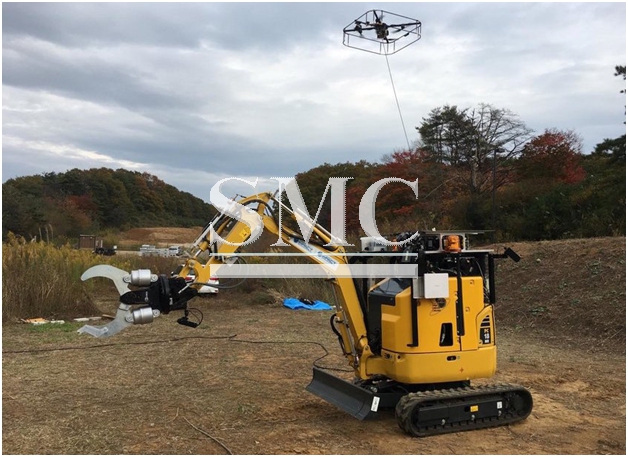Researchers from a number of universities across Japan have created a prototype for a robot that has the ability to increase chances of rescue and survival in disaster situations. The robot performs rescue operations with immensely enhanced operability and mobility.
When coming across the machine, it just looks an everyday hydraulic shovel; however, this is no ordinary machine. It has been designed to perform highly precise manoeuvre, in which it will apply the exact level of required force, whilst transmitting back resistance data to an operator whom can be no-where near the scene.
Other characteristics include four mounted fish-eye cameras that give the operator superior, real-time visibility of difficult surroundings, according to Japan’s Osaka University. Tests on simulated disaster sites confirmed its potential, said the university, which has been joined in the project by five other universities and technology institutes.
The following technologies were tested in the prototype, said Osaka University:
1. Technology for quickly controlling heavy power machines with high inertia by achieving target values on location and speed through fine tuning and by controlling pressures on a cylinder at high speeds;
2. Technology for estimating external load of multiple degree of freedom (DOF) hydraulically-driven robot from oil pressure of each hydraulic cylinder. The estimated force will be used for force control or force feedback to the operator of tele-operated rescue robots.
3. Technology for measuring high frequency vibration by a force sensor installed at the end effector of the robot and giving the operator vibrotactile feedback.
4. Technology for flying a multi-rotor unmanned aircraft vehicle UAV (“drone”) to the place of the operator’s choice and obtaining image information. Long flights and pin-point landing of the drone are available due to power supply through electric lines and a power-feeding helipad for tethering the drone.
5. Technology for presenting the operator images of an overhead view from an arbitrary place by using 4 fish-eye cameras mounted on the robot in real time so that the operator can assess the area surrounding the robot.
6. Technology for using a far-infrared ray camera capable of viewing with long-wavelength light so that the operator can operate the robot while assessing the situation even under bad weather conditions like fog.
Source: GlobalConstructionReview

Shanghai Metal Corporation is a trusted aluminum alloy, aluminum foil price, stainless steel price and stainless steel manufacturer, kinds of stainless steel in china.
Guest contributors are welcome at the Alloy Wiki.It is a weekly wiki and guide on alloy information and processing technology, while also about the vast array of opportunities that are present in manufacturing. Our team of writers consists of a Machining Material Supplier / Machinist / Tool and Die Maker, a Biomedical Engineer / Product Development Engineer, a Job Development Coordinator / Adjunct Professor, and a President and CEO of a manufacturing facility.
Link to this article:Japan has created a high-skilled rescue robot
Reprint Statement: If there are no special instructions, all articles on this site are original. Please indicate the source for reprinting:Alloy Wiki,thanks!^^


